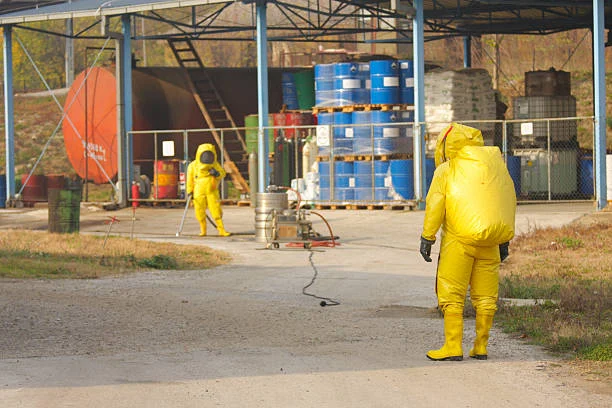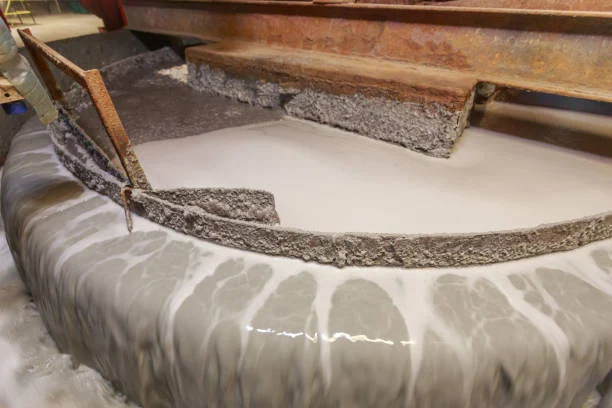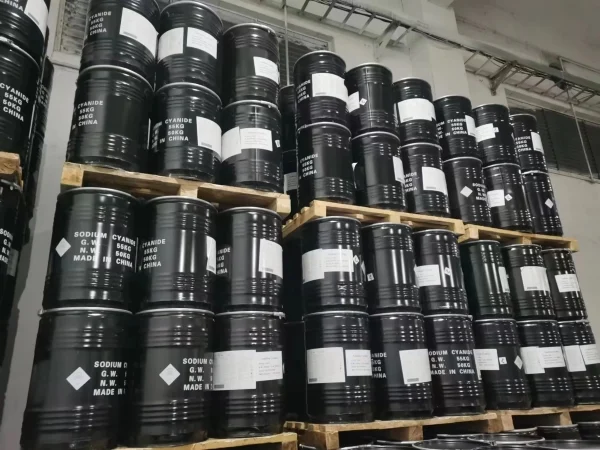
Introduction
Cyanide leaching has long been a dominant method in gold extraction due to its high efficiency and relatively low cost. However, the process is not without its challenges, such as the need for long leaching times, high cyanide consumption, and the presence of refractory minerals that can impede gold dissolution. This is where Leaching aids come into play. Leaching aids are substances added to the cyanide leaching solution to enhance the extraction of gold, offering a more efficient and cost - effective approach to gold mining.
How Leaching Aids Work
Increasing Dissolved Oxygen
One of the primary functions of many leaching aids is to increase the dissolved oxygen content in the cyanide solution. For gold to dissolve in cyanide solutions, oxygen is required as an oxidizing agent to facilitate the oxidation of gold and its subsequent combination with cyanide ions. In normal conditions, the oxygen supplied from air is often insufficient, which limits the rate at which gold dissolves. Leaching aids like peroxides and persulfates can break down and release oxygen, ensuring a higher concentration of dissolved oxygen in the slurry. For example, hydrogen peroxide decomposes to provide an additional source of oxygen for the reaction between gold and cyanide.
Forming Galvanic Cells (Heavy Metal Salts)
Certain heavy metal salts, such as lead salts, MERCURY salts, and bismuth salts, can act as leaching aids by creating local galvanic cells. When added to the cyanide slurry, these heavy metals deposit on the surface of gold particles. This creates a potential difference between the gold and the deposited heavy metal, which accelerates the dissolution of gold. The gold acts as the anode where oxidation occurs, and the heavy metal - coated area acts as the cathode. This electrochemical - like process significantly speeds up the rate at which gold is leached.
Chelation and Impurity Removal
Some leaching aids can bind with or remove impurities present in the ore that may interfere with the cyanide leaching process. In ores containing metal ions like copper, zinc, iron, these impurities can react with cyanide, consuming it and reducing the amount available for gold dissolution. Chelating agents in the leaching aids form stable complexes with these impurity ions, keeping them away and preventing their reaction with cyanide. This not only reduces cyanide consumption but also improves the overall efficiency of the gold - leaching process.
Types of Leaching Aids and Their Specific Roles
Oxidizing Agents
1.Peroxides
Hydrogen Peroxide: Hydrogen peroxide is one of the most commonly used oxidizing leaching aids. It can rapidly increase the dissolved oxygen content in the cyanide solution. In industrial applications, adding hydrogen peroxide to the cyanide leaching system can significantly shorten the leaching time. For example, in some gold mines, the leaching time can be reduced by up to 50% when hydrogen peroxide is used as a leaching aid. It also helps in reducing cyanide consumption as the enhanced oxidation of gold allows for more efficient utilization of cyanide.
Calcium Peroxide: Calcium peroxide is particularly useful in ores with high sulfur content. It decomposes more slowly than hydrogen peroxide, providing a more sustained release of oxygen. Additionally, it can reduce the catalytic decomposition of cyanide by sulfur - containing minerals. In high - sulfur gold ores, using calcium peroxide as a leaching aid can lead to a 10 - 15% increase in gold recovery compared to traditional cyanide leaching.
Barium Peroxide: Barium peroxide has a unique property of providing a slow and stable release of oxygen. This ensures a constantly high concentration of dissolved oxygen in the slurry over an extended period. The gold dissolution rate increases linearly with the increase in barium peroxide addition, while the cyanide consumption remains relatively stable. It is also easy to prepare and apply in practical mining operations.
2.Persulfates
Persulfates are strong oxidizing agents. When added to the cyanide leaching system, they break down to form highly reactive sulfate radicals. These radicals can oxidize gold more effectively than molecular oxygen, leading to a significant increase in the gold leaching rate. In some cases, the gold dissolution rate can be increased up to 8 - fold compared to conventional cyanide leaching with air as the oxygen source.
Heavy Metal Salts
1.Lead Salts
Lead salts are widely used in cyanide leaching. In ores containing sulfide minerals like pyrite and arsenopyrite, these minerals can react with cyanide and oxygen, consuming them and reducing the efficiency of gold leaching. Lead salts can form a passivating layer on the surface of sulfide minerals, inhibiting their reaction with cyanide and oxygen. At the same time, lead can form a galvanic cell with gold, promoting gold dissolution. In a Canadian cyanide plant, by adding lead salts and maintaining a proper dissolved oxygen concentration, the adverse effects of sulfide minerals on cyanidation were successfully overcome, resulting in a 10 - 15% increase in gold recovery.
2.Mercury and Bismuth Salts
Mercury salts and bismuth salts can also act as accelerators in cyanide leaching. Similar to lead salts, they can form galvanic cells with gold, enhancing the leaching rate. However, due to the toxicity of Mercury and the relatively high cost of bismuth, their applications are more limited compared to lead salts. But in some specific cases where the ore has unique properties, these salts can still be considered as effective leaching aids.
Chelating Agents and Others
1.Citric Acid
Citric acid can be used as a leaching aid in Cyanide gold extraction. In ores containing metal ions such as copper, zinc, iron, these ions can consume cyanide and oxygen, reducing the efficiency of gold leaching. Citric acid can bind with these metal ions, forming stable complexes. For example, it forms a copper - citrate complex. This not only reduces the consumption of cyanide and oxygen by these impurity ions but also helps in dispersing the gangue minerals, improving the overall leaching environment. In some laboratory experiments, adding citric acid to the cyanide leaching solution increased the gold recovery by 5 - 10%.
2.Ammonia - based Compounds
In some cases, ammonia - based compounds can be used as leaching aids, especially in ores containing copper - gold minerals. Ammonia can form complexes with copper ions, reducing the interference of copper in the cyanide leaching of gold. By adjusting the ammonia - cyanide ratio in the leaching solution, it is possible to selectively dissolve gold while minimizing the dissolution of copper, which is beneficial for subsequent gold recovery processes.
Application Cases
1.In a Gold Mine in Australia
The mine was processing a low - grade, high - sulfur gold ore. By using a combination of hydrogen peroxide and lead salts as leaching aids, significant improvements were achieved. The gold leaching rate increased by 8 - 10% compared to traditional cyanide leaching. The addition of hydrogen peroxide provided extra oxygen, enhancing the oxidation of gold, while lead salts inhibited the negative impact of sulfide minerals. Cyanide consumption was also reduced by approximately 20%, leading to significant cost savings.
2.A Chinese Gold Mine Dealing with Complex Ores
The ore in this mine contained high levels of copper and iron impurities. By using citric acid as a leaching aid in the cyanide leaching process, the gold recovery rate increased from 70% to 78%. Citric acid bound with copper and iron ions, reducing their interference in the gold - cyanide reaction. The leaching time was also slightly reduced, improving the overall productivity of the mining operation.
Considerations for Choosing and Using Leaching Aids
1.Ore Characteristics
The composition of the ore is crucial in determining the appropriate leaching aid. For high - sulfur ores, oxidizing agents like calcium peroxide or barium peroxide may be more suitable as they can not only provide oxygen but also reduce the negative impact of sulfur. In ores with high levels of impurity metal ions, chelating agents such as citric acid or ammonia - based compounds should be considered.
2.Cost - effectiveness
The cost of the leaching aid, including its purchase price, transportation, and storage, needs to be evaluated. Some leaching aids, such as certain bismuth salts, may be effective but relatively expensive. In such cases, a balance between the cost and the improvement in gold recovery needs to be struck. Additionally, the reduction in cyanide consumption and leaching time due to the use of leaching aids should also be factored into the cost - effectiveness analysis.
3.Environmental Impact
Since cyanide leaching already has environmental concerns due to the toxicity of cyanide, the choice of leaching aid should also consider its environmental impact. For example, some oxidizing agents may produce by - products that need to be properly treated. The use of mercury salts, although effective in some cases, is highly restricted due to their extreme toxicity and environmental hazards.
Conclusion
Leaching aids play a vital role in cyanide gold extraction. They can significantly improve the efficiency of the leaching process by increasing gold recovery, reducing leaching time, and cutting down cyanide consumption. By understanding the different types of leaching aids, their working mechanisms, and how to select the most appropriate ones based on ore characteristics, gold miners can optimize their operations. As the demand for gold continues to grow, the use of leaching aids in cyanide leaching will likely become even more widespread, contributing to more sustainable and efficient gold mining practices.
- Random Content
- Hot content
- Hot review content
- Soda Ash Dense / Light 99.2% Sodium Carbonate Washing Soda
- Acetone
- Ferrous Sulfate Industrial Grade 90%
- Sodiumsulfite Technical Grade 96%-98%
- Sodium Peroxide
- Potassium borohydride
- Anhydrous Ammonia 99% Liquid
- 1Discounted Sodium Cyanide (CAS: 143-33-9) for Mining - High Quality & Competitive Pricing
- 2China's New Regulations on Sodium Cyanide Exports and Guidance for International Buyers
- 3Sodium Cyanide 98% CAS 143-33-9 gold dressing agent Essential for Mining and Chemical Industries
- 4International Cyanide(Sodium cyanide) Management Code - Gold Mine Acceptance Standards
- 5China factory Sulfuric Acid 98%
- 6Anhydrous Oxalic acid 99.6% Industrial Grade
- 7Oxalic acid for mining 99.6%
- 1Sodium Cyanide 98% CAS 143-33-9 gold dressing agent Essential for Mining and Chemical Industries
- 2High Quality 99% Purity of Cyanuric chloride ISO 9001:2005 REACH Verified Producer
- 3Zinc chloride ZnCl2 for High Molecular Weight Polymers Initiator
- 4High Purity · Stable Performance · Higher Recovery — sodium cyanide for modern gold leaching
- 5High Quality Sodium Ferrocyanide / Sodium Hexacyanoferr
- 6Gold Ore Dressing Agent Safe Gold Extracting Agent Replace Sodium Cyanide
- 7Sodium Cyanide 98%+ CAS 143-33-9










Online message consultation
Add comment: